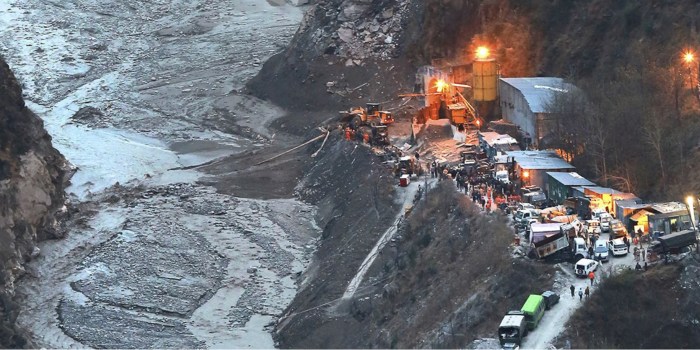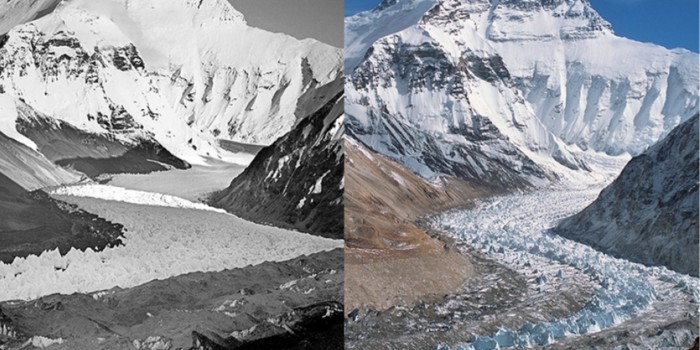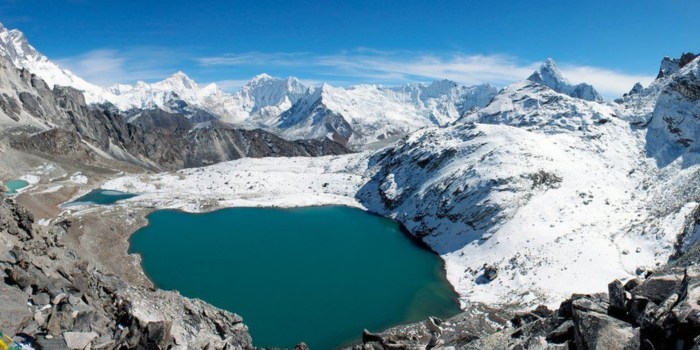Global Warming Effect On Himalayas And Its Biodiversity
Oct 07, 2023 By Sean William
The Himalayan mountain peaks are the remote regions and most inaccessible, but still are affected by global warming. Many people love to visit the global warming effect on Himalayas. These impacts are studied, and different stats are shared with people.
However, people continue to visit this place as tourists. This article will discuss the impacts of climate change on the Himalayas and how tourism affects it. So, keep reading to know all about Himalayas climate and tourism.
Himalayas Climate
The Himalayas climate is changing because of the global warming effects. It becomes the global hotspot and causes the water towers of Asia to melt. Not only does Global warming affect the Himalayas environment but also the wildlife of the region.

A Global Hotspot
In the discussion about global climate change, the Himalayas is the most sensitive topic to discuss. Because of the higher impacts of climate change on the Himalayas, it is the most affected place in the world. It is estimated that the coming years will also show the impacts on food, water, and energy resources.
This impact will affect not only Himalayan biodiversity but also throughout Asia. Different regions of the Himalayas have different conditions, environments, and vegetation. For example, the Western Himalayas are becoming warmer than the Eastern Himalayas. So, the Himalayas climate is becoming more and more complicated with the passing days.
The Water Towers Of Asia
With the change in the climate, the glaciers are also melting. These glaciers are known as the water towers of Asia and form many great rivers of the world. The rivers include the Indus River, the Mekong, the Ganges, and the Yangtze. Unfortunately, there are billions of people who are dependent on the Himalayas for their survival.
That weird climate change in the Himalayas may also affect these populations, including South Asia. The effect is especially on China because it has a 450 million population that depends on the Himalayas. Global warming effect on Himalayas has threatened the future resources in the surrounding area.
Impact Of Climate Change On Himalayan Biodiversity
The Himalayas climate is changing unexpectedly, which is affecting not only glaciers but also the Himalayan biodiversity. This effect is not only in a limited area but widespread in surrounding areas and resources like water, food, and energy.
Pastures and Agriculture
Under the current circumstances, it is expected that the vegetation area on the Tibetan plateau will change unexpectedly in the near future. The vertical vegetation may move to the higher outer part, and the cold deserts may shrink. The impact of climate change on Himalayan biodiversity may result in the farming region shift.
This shift is expected to affect the southern area of Northeast China. So, climate change because of global warming is not just affecting the Indian community but also affecting the neighborhood. The results also show that because of climate change, more frequent droughts are expected. However, the grassland is affected because of the climate change in the Northeast Tibetan Plateau.
Mountain Infrastructure
Himalayan climate change also posters the impact on infrastructure like hydropower plants, communication systems, roads, and bridges. It is expected that the hall hydropower system, which is established with many rivers, may be distorted. This distortion may cause low water during the dry seasons. For this, engineers are putting effort into facing challenges.
Moreover, the operation to face the challenges may become more complex because of unexpected or sudden changes. This complexity and the low river flow will make the situations difficult to handle and predict. Thus, the Global warming effect on Himalayas is becoming severe.

What Is Happening To The Himalayan Mountains Today?
Because of climate change, glaciers are melting rapidly and are expected to lose 80% of their volume in this century. It is becoming difficult to restrict this change and save vegetation and other resources. Moreover, people living in the mountains are more likely to be affected by this climate change.
Shifting Snows By Climate Change
The Himalayan mountain in India is the most iconic among the mountains because it holds 30,000 miles of glaciers. You won't see these huge glaciers anywhere in the world except the poles.
Different regions of the Himalayan mountains have different effects, but there are some regions that are most sensitive to climate change. Tibet Plateau and the northwestern part of the mountain belt are sensitive under the 1.5°C. Thus, shifting in the temperature of the climate causes a shift in snowfall and rain patterns.
Melting Glaciers
Glaciers and snow on the mountain melt down into the river and thus sustain their flow. But because of global warming, the melting speed has increased rapidly. These glaciers are big water stores and drown in high amounts to the river.
This unnatural melting makes the ecosystem lack water resources. Another effect of melting glaciers is that more water in the lakes results in floods. After 1980, the climate change conditions have elevated risks in the region.
What will happen if it continues?
Scientists are still making an effort to face the challenges of global warming effects on Himalayas. With the passage of time, they are studying the causes of these melting and the unexpected changes in the Himalayan areas.
Besides, they are putting efforts into it, but there is a need to know more about it. It is said that if the glaciers continue to melt and the climate change drops unexpectedly, the challenges will be worse in the future.
Does Tourism Affect the Himalayan Environment?

Besides the advent of these diverse global warming effects on Himalayas, people continue tourism and mountaineering at this place. Tourism is affecting the Himalayan environment in a certain way because of a lack of management. Many people visit this place because of the mountain that has made it a place of trash.
But this issue can be resolved if they limit tourism and shift it to other mountains. With fewer visits, there will be less trash and, hence, less effect on the climate. Tourism causes over-reliance on the environment and being sensitive because of climate change; this over-reliance makes the effect worse.
Conclusion
If you are a travel enthusiast, you should learn about the global warming effect on Himalayas. You can read about the glaciers and biodiversity and how they affect them. Also, we have explained how tourism affects the already sensitive environment of the Himalayas.
-
![]() Destinations
DestinationsExploration of Best Homestays near Bangalore
Juliana Daniel Oct 07, 2023
-
![]() Attractions
AttractionsRoopkund Skeleton Lake Trek 2023: An Adventure of a Lifetime
Sean William Oct 08, 2023
-
![]() Guides
GuidesDudhsagar Trek: Enjoy Exciting Tour From Bangalore In 2023
Sean William Oct 07, 2023
-
![]() Destinations
DestinationsMalaysia Island Tour - 7 Best Islands to Explore
Juliana Daniel Oct 09, 2023
-
![]() Destinations
DestinationsFishing In Manali For Exciting Experience
Sean William Oct 07, 2023
-
![]() Guides
GuidesPlan Trek To Sharavathi Valley For Exciting Tour
Sean William Oct 07, 2023
-
![]() Attractions
Attractions7 Best Waterfalls in Madhya Pradesh That You Should Explore
Juliana Daniel Oct 09, 2023
-
![]() Guides
GuidesRamanagara Camping With Adventure Activities: An Ultimate Guide For Travelers
Sean William Oct 08, 2023







